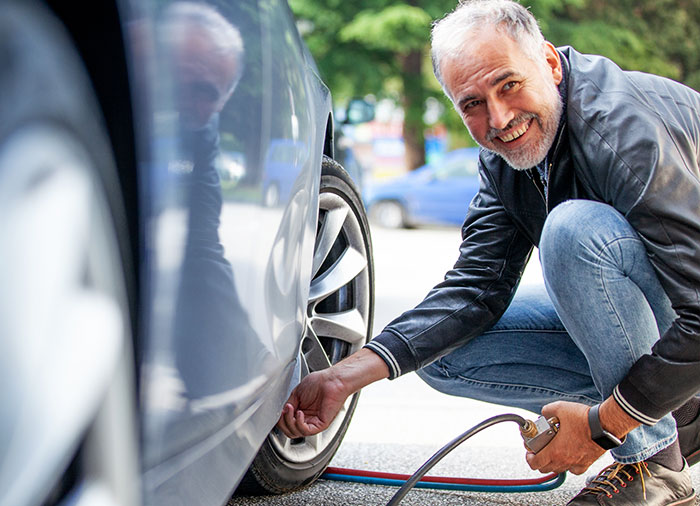Why is Air Pressure Important to Tires?
November 2, 2021

Regularly checking and adjusting the air pressure of your tires is one of the simplest vehicle maintenance tasks and can have a large payoff in the form of less wear on your tires, better gas mileage, and better vehicle handling.
The problem with underinflated tires
Driving on underinflated tires can cause problems. Because more of your tire is touching the ground when it loses its form due to underinflation, it will wear down faster than a properly inflated tire. An underinflated tire also increases rolling resistance and requires more energy to turn, reducing your fuel efficiency. Your vehicle handling will also suffer, and underinflated tires will cause a bumpy ride.
The problem with overinflated tires
An overinflated tire will become stiff, and less of it will be in contact with the road. This makes your vehicle handling worse. Overinflated tires have an increased risk of damage from debris and potholes. You also risk your tire popping, which can cause an accident.
How to inspect your tires
Look for signs of wear on your tires, such as worn tread, objects like nails embedded in them, and cracked sidewalls. Check to see if the wear on the tread is even.
How to find problems with your tires
There are some signs of tire problems you can look for when driving or checking your tires.
- If your car pulls to one side while driving and you know it is not an alignment problem, it might have to do with your tires.
- Your tires are probably overinflated if the centre section of the tread is worn down.
- If the outside of the tire is worn, your tires could be underinflated.
- A squealing sound when turning a corner at a normal speed could also indicate that your tires are not properly inflated.
How to check your tire pressure
It is easy to check your tire pressure using an air pressure gauge. You can buy them at department, hardware, and auto parts stores.
- Check your owner’s manual for the recommended tire pressure. It will be in psi or pounds per square inch. There might be a hot pressure (after the car has been driven) and a cold pressure (to be measured after minimal or no driving). The psi on the sidewall of your tires is not the proper inflation pressure but the maximum pressure the tire should be.
- Remove the cap from the valve stem of your tire and put the gauge over it.
- Push down to prevent air from escaping and to get an accurate reading.
- Check the pressure of all the tires and add or let out air until they are at the pressure recommended by the manufacturer.
- To reduce your tires’ air pressure, push the non-rounded side of the air pressure gauge into the valve stem until the appropriate amount of air escapes.
- Use an air compressor at a gas station to add more air.
Properly inflated tires will help you have more control of your car, get better fuel efficiency, and make your tires wear more evenly and last longer.
Other News

Real Insurance Stories from Real People - Langley, B.C., customer Brenda S. explains her claims experience for home insurance with Western Coast
Western Coast Insurance Services Testimonial We’re here to help you through the clai…

You Can Shop Around for Optional Car Insurance in B.C.
Yes, you can buy optional car insurance from private insurers in British Columbia. For basic…
Western Coast Insurance Services Ltd. is a wholly owned division of Western Financial Group Ltd. Insurance products are underwritten by certain licensed insurance companies and are only available throughout British Columbia, Canada.
2025 Western Coast Insurance Services Ltd. All rights reserved.


